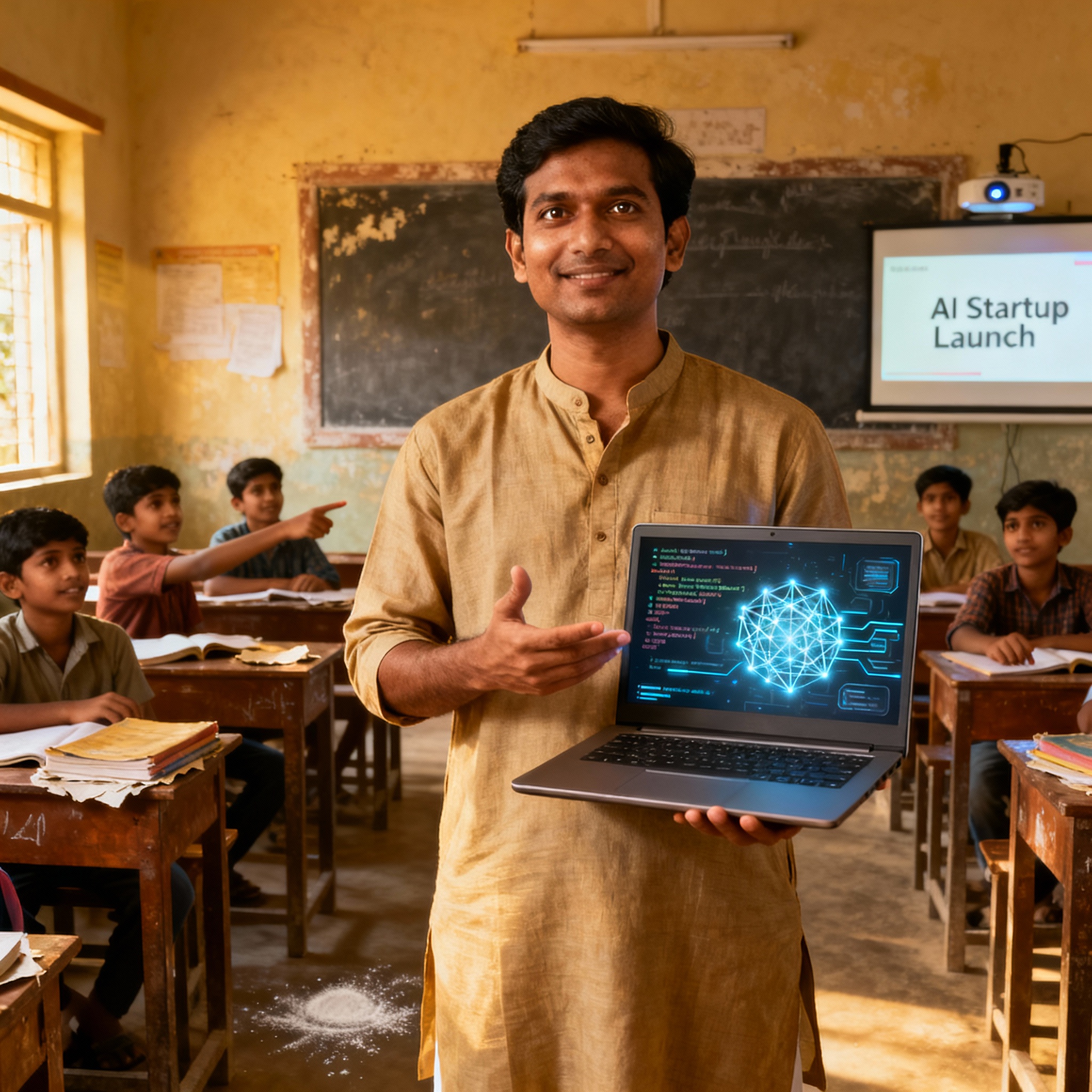On a rainy evening in Sonipat, Haryana, Rohit Mehra sat alone in his one-bedroom apartment, staring at a handwritten rejection letter from an angel investor. “You lack pedigree,” it read coldly. For most, this would have been the end. For Rohit—a high-school teacher who taught himself coding using borrowed library books—it was just the beginning of a journey that would shake up the global AI scene and keep even Silicon Valley titans on alert.
The Roots: Humble Beginnings and a Passion for Learning
Rohit was born to schoolteachers in a small town where resources were scarce but curiosity abundant. He excelled academically but stayed in Sonipat to help support his family, taking up a teaching job at the government school after college. Despite a modest salary, he poured evenings into personal learning, trading his meager savings for second-hand laptops and pirated coding manuals. “I wanted to show my students that learning never ends,” says Rohit.
The Spark: How a Classroom Problem Lit the Fuse
The idea for Rohit’s startup struck when he noticed that bright students from rural backgrounds kept falling behind, not for lack of talent, but for the absence of personalized guidance. “My students had dreams bigger than their resources,” he recalls. He saw the gap: rural and underserved students needed tailored learning—but India’s vast population made this a colossal challenge.
That’s when Rohit thought: Could I build an AI tutor, equipped to understand each child’s context, language, and pace? The question became an obsession.
From Chalk to Chips: Building the Startup
With only ₹20,000 in savings, Rohit launched LearnMitra from his tiny kitchen table. It started with an open-source AI model, translated into Hindi and other Indian languages late into the night. The first product—a chatbot that personalized math and science lessons—was tested on his own students. Results were instant: school scores rose, but more importantly, confidence bloomed.
Early obstacles were relentless: lack of funding, server failures, skepticism from local parents, and the crushing pressure of working two jobs. “The hardest part wasn’t the code. It was convincing others—sometimes even myself—that a teacher from a small town could build world-class tech,” Rohit says.
Breakthroughs and Virality: The Turning Point
A pivotal moment arrived when a video of a rural student explaining the Pythagoras theorem—using LearnMitra—went viral on social media. In weeks, inquiries flooded in from across India and even from nonprofits in Africa. A Bengaluru accelerator offered their first funding and mentorship, allowing Rohit to focus full-time.
As the platform rapidly scaled, it added local language support, voice interfaces (key for non-English speakers), and teacher dashboards. By late 2025, LearnMitra boasted 2 million+ users and partnerships with NGOs and edtech giants. Its edge? Hyper-local AI models that beat even global platforms at understanding India’s educational diversity.
Today & Tomorrow: From Sonipat to Silicon Valley’s Radar
Today, LearnMitra is a 45-member team with revenues crossing ₹8 crore a year, bootstrapped beyond its first small funding. Schools from rural Rajasthan to urban Mumbai now rely on LearnMitra to bridge learning gaps. Multinationals and US-based VC funds have come knocking—Silicon Valley has even attempted failed acquisitions.
Rohit’s vision is getting bigger. “Next, we want to build AI tools that make rural children job-ready for tomorrow’s economy—coding, communication, critical thinking. Not just exam scores,” he says with pride.
Founder Wisdom: Rohit’s Advice to Hustlers
“Start with the problem, not the solution. If you care deeply and never stop learning, nothing—not even geography or background—can stop you. And remember, rejection is just another lesson. Learn and move on.”
This article aims to inspire, inform, and reflect the human stories powering India’s next tech revolution—one small town at a time.





